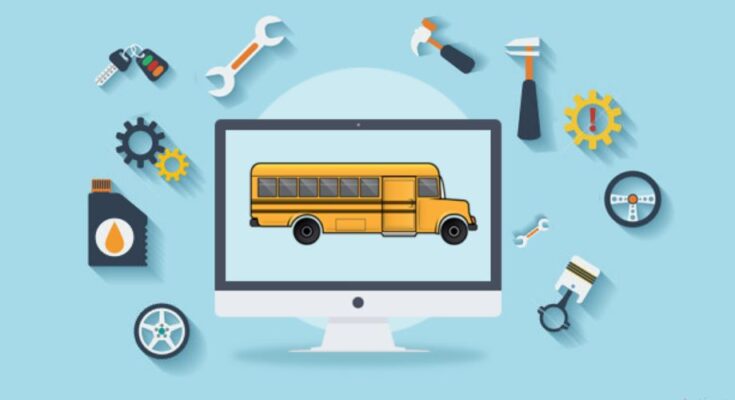When it comes to the safety of our children, every precaution must be taken. One crucial aspect of ensuring their safety during their daily commute to school is the proper maintenance of school buses. School bus maintenance goes beyond just ensuring the vehicle’s longevity; it directly impacts the safety and well-being of the students who rely on these buses for transportation.
Read this blog by the experts of a Tata Motors Bus Showroom in Faridabad –
The Role of School Buses in Student Transportation
School buses are the primary mode of transportation for millions of students across the country. They provide a convenient and efficient means of getting students to and from school, often saving parents the time and effort it takes to personally drop off and pick up their children.
The Crucial Role of Maintenance
Maintaining school buses is not just about keeping them in good cosmetic condition. It’s about ensuring that every mechanical and operational aspect of the bus is functioning flawlessly.
Safety First
The safety of students should always be the top priority. School buses are built to strict safety standards, but these standards can only be upheld through regular maintenance. Malfunctioning lights, worn-out tires, Faulty brakes, or engine troubles can increase accidents, putting students at risk.
Reliability
A well-maintained school bus is a reliable one. Breakdowns and mechanical failures can disrupt the entire schedule, leading to delays in picking up or dropping off students. This can inconvenience parents, disrupt classes, and create unnecessary stress for everyone involved.
Cost Savings
As added by the experts of a Chota Hathi Showroom in Delhi, proper maintenance can actually save costs in the long run. Small issues, when left unattended, can escalate into major problems that require expensive repairs. Routine maintenance helps identify and address these issues before they become more complex and costly.
Legal Compliance
School buses are subject to various regulations and safety standards imposed by government authorities. Failing to meet these standards due to poor maintenance can lead to legal issues for both the school and the transportation provider.
Respect for the Investment
School buses are a significant investment for any educational institution. Proper maintenance ensures that this investment lasts for its intended lifespan, maximizing the return on investment.
Key Aspects of School Bus Maintenance
School bus maintenance is a comprehensive process that covers various aspects of the vehicle. Here are some key areas that require regular attention:
Mechanical Inspections
Regular mechanical inspections are crucial. This involves checking the engine, transmission, brakes, steering, and other essential components for any signs of wear or malfunction. Fluid levels, belts, hoses, and filters should also be routinely checked and replaced as needed.
Tire Maintenance
Tires play a critical role in road safety. Proper tire pressure and tread depth are essential for maintaining traction and stability. Regular tire rotations and replacements ensure even wear and reduce the risk of blowouts.
Electrical Systems
Functional lights, including headlights, taillights, brake lights, and turn signals, are vital for communicating the bus’s movements to other drivers on the road. Electrical systems, including batteries and wiring, should be inspected to prevent any failures.
Interior and Exterior
The interior of the bus should be kept clean and well-maintained. Seats, seatbelts, windows, and emergency exits should all be regularly inspected. The exterior of the bus should be free from damage that could compromise its structural integrity.
Environmental Compliance
School buses must adhere to emissions standards to minimize their impact on the environment. Regular maintenance ensures that the engine’s emissions control systems are functioning properly.
Preventive Maintenance Schedule
Developing a preventive maintenance schedule is a proactive approach to school bus maintenance. This schedule outlines the tasks that need to be performed at specific intervals, ensuring that no aspect of maintenance is overlooked.
Collaborative Efforts for Effective Maintenance
Maintaining school buses is not the sole responsibility of the maintenance team or the transportation provider. Highly skilled mechanics and technicians should be responsible for performing inspections and maintenance tasks. They should be trained to identify potential issues and address them promptly.
Parents can play a role in ensuring their children’s safety by reporting any unusual sounds, behaviors, or observations related to the school bus.
Summing Up
The safety and well-being of students are paramount, and school bus maintenance is a critical component of ensuring that safety. By prioritizing regular inspections, addressing maintenance needs promptly, and fostering a collaborative approach, educational institutions can create a safer and more reliable transportation system for their students. Remember, a well-maintained school bus doesn’t just transport students; it transports dreams, aspirations, and a promising future.



